Complete Guide to RV Surge Protection
There is a lot of information available regarding electrical protection for recreational vehicles and for good reason. Poor electrical quality and surges can create costly damage to your RV and sensitive electronic devices powered by your RV's electrical system. This article is well researched and will provide you with the information you need to protect your RV from all types of electrical issues. We will cover all basic terminology and the safety and quality considerations needed to compare devices to protect your RV whether you are in a park, boondocking, or on the move.
Have a specific question? Jump to one of the sections below:
- What is an RV Surge Protector?
- Why Do You Need an RV Surge Protector?
- How Does a Surge Protector Work?
- Types of RV Surge Protectors
- We Have an Autoformer, Do We Need a Surge Protector?
- Key Features of Surge Protectors
- Difference between Detection and Protection
- Understanding Levels of Protection and Joule Ratings
- Top Brands of RV Surge Protection
What Is an RV Surge Protector?
An RV surge protector is a device that connects between the RV park power pedestal and your RV’s electrical system that is designed to protect your RV against dangerous power surges. There are more advanced RV surge protectors that can also cut power off to your RV if it detects any dangerous electrical conditions such as undervoltage or miswired pedestals.
What is a power surge? A power surge is a temporary power jolt that lasts for a fraction of a second. Power surges can be caused by lightning strikes, AC units, heavy equipment, tripped circuit breakers or even power grids switching over. A power surge can cause damage to anything connected to it. Components especially sensitive to power surges are computers, TVs, mobile devices, and satellite receivers.
So, if you protect yourself from electrical surges, then that should cover you, right? A typical misconception is that an RV just needs to be protected from surges. That is all we worry about in houses, so it makes sense that it would be the same for an RV, right? Actually, that is not the case. RVs are wired differently than houses and since they are constantly moving from place to place, they do not receive their power from one stable source all the time. For these reasons, RVs need more protection than surge protection alone.
If you’ve been RVing long enough, you know that you can’t guarantee what power issues you are going to get when you pull up to a campground pedestal. One site can have steady, stable power coming from the pedestal while the one across the row can have a miswired pedestal with no ground wire in place or worse.
In addition to wiring issues, there can be low voltage issues, commonly referred to as brownouts, when too many RVs are pulling power from a single source (think summertime when everyone is running their AC units at the same time). Brownouts are actually the most common electrical issue RVers experience, and most times you don't even know one is happening. I guess you could say that plugging into some pedestals is a little like a game of Russian Roulette.
So, how in the world do you protect against this field of electrical enemies? Sure, you can test your pedestal with a multimeter before plugging in, but you can’t be there 24/7 watching for any electrical issues that might occur. In order to truly protect against all of the possible electrical issues that happen in RV campgrounds, you need a complete electrical protection system and not just one of the entry-level $80 - $100 surge protection units.

We will get into the specifics about complete electrical protection units and the types of electrical issues that you may encounter as an RVer, but for now, when we refer to an “RV Surge Protector” we are actually talking about a high tech piece of equipment that is designed to monitor and protect your RV from many different electrical issues and not just surges.
There are many names for an RV Surge Protector, and they all are referring to the same device that protects against more than just electrical surges. Common names for a Surge Protector include:
- Electrical Management System
- Energy Management System
- EMS
- Total Electrical Protection System
- Smart Surge Protector
- Complete Electrical Protection Unit
Why Do You Need an RV Surge Protector?
What exactly are you protecting your RV from when you use an RV Surge Protector? It’s a lot more than power surges, which is what we usually associate surge protectors with. Surges are the least common problem with RV electricity, believe it or not. An RV typically has a lot of sensitive electronic circuitry in it, and having steady power is crucial to keeping these components from having an early funeral. Failure of components like AC units, refrigerators, fan motors, and even computers plugged into a wall outlet can be very expensive to replace. While the expense is a big deal, there are other inconveniences to consider like getting your RV in and out of a repair shop in a timely manner.
Even worse, what if improper wiring at the power pedestal or inside of your RV caused an electrocution risk for you and your family? Needless to say, preventing these types of issues is the key. One of the biggest things you can do help prevent electrical failures and electric shock is to make sure the power inside your RV and the power coming into your RV is monitored in some way. This is actually very easy to do, and you do not need to be an electrician to do it.
Let’s look at the 4 electrical issues that are addressed with an RV Surge Protector:
Electrical Issue #1: Surges
The first issue that most RVers will think of as it relates to power coming into the RV is a power surge. A surge is a quick electrical spike that can quickly destroy anything in its path, so yes, we need to make sure that surges are accounted for when we look at protecting our RV. Since most of us are familiar with living in a house, we tend to only think of surge protection as it relates to possible electrical issues, and we make the assumption that this is all you need for your RV. The problem with this line of thinking is that you can’t really compare the two. Residential homes generally have a good, stable, consistent power supply coming in, and the local power company has designed the electrical grid to provide plenty of power for the entire neighborhood. Don’t assume that RV parks and pedestals have been treated with the same level of care.
Electrical Issue #2: Low and High Voltage
While we discussed surges that are defined as quick extreme voltage spikes, there is something that is much more common than a spike, and that is low and high voltage. As an RVer, you will rarely experience a true surge, but you will without a doubt experience low voltage and maybe even high voltage. Considering normal voltage for an RV is 120 volts, low voltage is typically defined as anything below 102 volts, and high voltage is anything above 132 volts. So, what causes the more common low voltage situation?
Imagine you are at a crowded park in the middle of the summer, and everyone is turning their AC units on. When this occurs, it is very possible to see low voltage conditions, but why? Unfortunately, many campgrounds have faulty wiring and may even add RV sites and pedestals over time without increasing their electrical service. This can also happen during RV rallies as well when power is brought in temporarily using generators and you end up on the end of a run filled with a lot of power-sucking RVs. It would be the equivalent of having a pizza party and bringing enough pizza for 20 people and 30 people show up. Someone is going home hungry!
When the voltage into your RV drops below an acceptable level, the amperage increases which generates heat. Over time, this can cause electronic components in your RV to fail. This may include refrigerators, AC units, washing machines, TVs, microwave ovens and more. The problem with low voltage is that you may not even know that it is happening when it occurs. Many times, a low voltage situation will not immediately zap an appliance, but it is guaranteed that the life expectancy of an appliance is reduced when given low voltage.
So, you wake up one day and you have an AC unit that has failed, and because there is not an obvious cause and effect happening with low voltage, you just assume that the unit failed because of natural causes. Low voltage and high voltage are the silent killers and dealing with this should be a part of your plan to protect your RV.
Electrical Issue #3: Miswired Pedestals
Now let’s think about RV parks across America. The original electrical design of the park should have been professionally inspected, but over time the electrical pedestals that we plug into can begin to have problems. Think of the thousands of RVs plugging into the pedestal before you, and then think of some of the things you have seen while traveling like RVs running into pedestals, RVers dropping their power cord in the dirt and then plugging it right in, jerking and pulling on the electrical cord to get it unplugged from the pedestal, and so on. I’ve actually seen someone pull off from a site while still connected to the pedestal. Imagine the condition of that pedestal when the next RVer pulls in! Yikes! And while some RV parks are better than others at keeping up with preventive maintenance and necessary repairs, some choose to try to correct problems themselves or even worse, not at all. We hear plenty of stories of electricians repairing pedestals and wiring them wrong because it is not exactly the same as wiring a regular house panel. All of these type conditions are real issues that are more common than you may think and should be addressed with a proper electrical protection system.
What can these miswired pedestals cause for you?
- Open Ground. A ground is designed to dissipate excess voltage/current literally to the ground connection at the campground or home service panel.. If there is no connection to that panel ground, then this is considered an open ground condition. In an open ground situation, if there is current leakage for any reason, then that creates a voltage which has nowhere to go, but it will certainly go somewhere. If the ground doesn’t exist, or is “open,” then that excess voltage could go to the chassis or frame of your RV, and possibly your own body if you get in the way.
- Open Neutral. The neutral line in a pedestal is a return path for electricity all the way back to the service panel. If this connection is missing, then this is considered open neutral. In a 30-amp outlet this will simply shut off the power. But if you’re plugged into a 50-amp/240-volt outlet and the neutral wire becomes disconnected, it puts your RV in danger of receiving up to 240 volts across appliances only expecting 120 volts. This condition is referred to as open neutral.
- Reverse Polarity. This occurs when the hot wire and neutral wire get wired backwards at the pedestal. Everything in your RV could still work, but it can charge things even when a switch is off. For example, if a toaster is plugged into an outlet with reverse polarity, then even with the toaster turned off, the coils in the toaster could still be live. Reverse Polarity is bad business and can be very dangerous.
If you are interested in reading about a discussion I recently had with an RV park electrician then read about: Electrical Safety – Discussion with an RV Park Electrician
Electrical Issue #4: Wiring Inside the RV
There is one more thing to consider, and that is the wiring inside of your RV. Up until this point, we have just discussed dealing with the incoming power from the pedestal. What if the incoming power is fine, but you have a wiring issue inside of your RV?
If you have ground wire issues or neutral wire issues, then the effects on your electronics, your RV and even your life, could be fatal. Imagine losing the neutral line in a 50-amp RV. In a 50-amp RV, there are two hot lines that share one neutral line, and if the neutral line is lost then those two hot lines can come together creating 240 volts in your RV. There is no electronic device that can handle that level of voltage for any sustained period of time without being destroyed.
How do you protect yourself from lightning?
If your RV takes a direct lightning hit or even a hit next to your RV, chances are there is very little that you can do to protect your RV. A lightning strike even very close to your RV can cause a surge to run into your RV through your leveling jacks or through the pedestal, frying your appliances and electrical components. This is definitely the most terrifying scenario, but take comfort in the fact that it is also the most rare electrical issue facing RVers. Depending on the severity level, having an RV Surge Protector is your best chance of protecting yourself from lightning strikes.
SURVEY RESULTS: How rare is an RV lightning strike? In a survey we did of over 3,000 RVers, less than 3% of all respondents said they had had lightning strike their RV before. RV lightning strikes are far less common an issue than voltage fluctuations. In the same survey, over 53% of respondents said their power was cut off by their RV Surge Protector due to low or high voltage.

How do you protect your electronic devices?
By now, you know that while a surge or lightning strike can cause the most damage at one time, it’s high and low voltage that will wear away at your electrical components over time. The very best way to protect your RV and your electronic devices is to use an RV Surge Protector that offers more protection than just surge. The top two units that offer this level of protection are from Surge Guard and Progressive Industries.
If you want to be sure that the RV surge protection you invest in for your RV is going to help you keep your appliances and electronics running for a long time, be sure to scroll down and read through the key features of these units.
How Does a Surge Protector Work?
Surge protectors use something called metal oxide varistors (MOVs) to dissipate excess voltage. The number of MOVs in the surge protector and how many joules each MOV can dissipate determines the surge protector’s ability to protect against surges. This is reported as a surge protector’s joule rating.
Joules Rating
Electricians will get excited when someone starts talking about joule ratings, but for me, I just trust that this measurement is how to determine the surge rating of a surge protector. The short version of what a joule is would be one watt of power dissipated for one second, and the work of passing one amp through a resistance of one ohm for one second. (Imagine what the long version would be!) So, when you are looking at a surge protector for your RV, pay close attention to the joule rating.
Let’s look at the joule ratings for two popular 50-amp RV Surge Protectors: the Surge Guard 34951 and the Progressive Industries EMS-PT50X. The Surge Guard 34951 has a joule rating of 4200, and the Progressive has a joule rating of 3580. You really don’t need to look any further than this to know that the Surge Guard has a higher surge rating, but how is this achieved? The Surge Guard 34951 50-amp model has 12 MOVs inside, and each MOV can dissipate 350 joules. (12 MOVS x 350 joules = 4200 total joule rating).
During a surge event when using the Surge Guard 34951 Electrical Protection System, the electricity will go through the fuse of a surge protector before the MOVs will even see the spike. If the voltage of the spike is not excessively high, then the amperage is relatively low, and the fuse will not be opened. However, the surge is still blocked from entering your RV by the MOVs. The MOVs will suffer degradation but may not fail completely. In the case of a light surge, you will not know it even happened since the fuse did not open.
The effects of these small surges will accumulate over time until the MOVs are exhausted, at which point the MOVs will short out and blow the fuse. In the case of a larger surge, the amperage will be great enough to open the fuse and short the MOVs immediately. In this case, the light on the unit would appear indicating a loss of surge protection.
So, when someone asks me if an RV Surge Protector is a “one and done”, the answer is that it depends on how big the surge is. One large surge that is over the maximum joule rating of the unit being used could immediately take a unit out and expend all of the surge protection capability, but the same unit could also last years while only receiving minor surges that do not together total the maximum joule rating. As you can see, the joule rating on a surge protector is directly related to the amount of surge “life” it has in it; the higher the joule rating, the more surge it can dissipate before expiring.
Types of RV Surge Protectors
If you go to Facebook and ask any RV group which surge protector they recommend, you will be bombarded with a never ending list of different models and types of devices ranging from $70 - $500. You will hear every brand on the market mentioned along with some pretty impressive claims that may or may not be true. This can be very overwhelming when you are a new RVer and you are just looking for the best way to protect your new investment. You have heard that you need one of these “surge protectors,” but there are so many options to choose from. How do you decide? Let me see if I can help you with that.
Hardwired vs Portable RV Surge Protectors
When purchasing an RV Surge Protector, you will have a choice to get a system that is hardwired into the RV electrical system or a portable unit that is plug and play right to the power pedestal. Some RVs come with a pre-installed hardwired automatic transfer switch, but the levels of additional surge protection these units offer varies greatly, and most do not provide the same levels of protection as the aftermarket portable and hardwired units.
There are pros and cons to both portable and hardwired RV Surge Protectors, but they all offer different levels of protection. Which is right for your RV?

Hardwired RV Surge Protectors
A hardwired RV Surge Protector has to be installed into the RV’s electrical system before using. This can be done by someone with electrical experience, but most people have the unit professionally installed. The unit can be installed in-line before or after the transfer switch, but most choose to place it before the transfer switch since the transfer switch is an expensive piece of equipment they would like to protect.
With a hardwired unit installed, you would connect power like normal using your RV power cable. Before allowing power to flow to your RV, the unit will analyze the pedestal to ensure that there are no issues such as open ground, open neutral, reverse polarity, or high and low voltage. This analysis doesn’t take long to complete (128 - 136 seconds), and once it’s done, the system will allow power through to your RV if no faults are detected.
If your RV experiences a fault then the hardwired units have a reset feature that will return power to the RV once the faulty power has passed. They all have at least a 128-second delay on this to protect AC compressors.
Although it is not easy to access in most cases since they are installed inside the RV, most hardwired units have some sort of display on the front of them where you can see any faults that may occur. Some hardwired units have the option to add a wired display inside your RV where you can monitor the faults, volts, and amps without having to look at the unit itself.
Hardwired OEM Automatic Transfer Switch / Surge Protectors
Many class A motorhomes have some type of built in surge protector that is combined with the transfer switch. Smaller class A, B, and C motorhomes may or may not have any electrical protection built in, and towables like 5th wheels and bumper pulls likely have nothing built in, with the exception of very high-end units like the Mobile Suites.
The most common pre-installed or OEM system you will find in a motorhome is a Surge Guard unit, and Surge Guard offers several different models all with different levels of surge protection. For those of you that have the OEM Surge Guard Automatic Transfer Switch, it may surprise you to know that you may not be as protected as you think. I hear all the time from RVers that they have a built-in unit and that they are protected, but when we take a look at the model number of the built in unit, we find that they have nothing more than a surge protector, and all of the other possible electrical issues are not accounted for.
Below is a list of the current Surge Guard Automatic Transfer Switches available by Southwire so that you can confirm what level of protection you may already have installed in your RV. Keep in mind that model numbers change over the years, so you may have to look your model up if you don’t see it on the chart below:

Chart Source: Southwire
As you can see from the chart, if you have a built-in Surge Guard Automatic Transfer Switch with model number 41300 (30-amp) or 40100 (50-amp), then you have no additional electrical protection. These models serve as just a transfer switch for RVs with generators. There are multiple types of 50-amp models that offer different levels of protection, and this is usually where the confusion starts.
Most motorhomes have limited protection with model 41260. This transfer switch does have surge protection and can detect some wiring issues, but it does nothing to protect you from more common issues like high/low voltage and load side issues. With the higher-level transfer switch models that end in RVC, you do get full protection from miswired pedestals, surges, and high/low voltage. What these units do not protect against, nor does any built-in unit on the market, is the load side protection for any wiring issues inside the RV.
Before you go with what the RV salesman tells you, which is usually to tell you that you are completely protected, do some research of your own. Go look at the model number of the built-in unit that you have and decide for yourself. From my research, it appears that most of the higher end diesel pushers from Entegra, Winnebago, Thor, and Newmar have one of the higher end RVC Surge Guard Automatic Transfer Switch units built in. Don’t assume though; go check the model number you have and be sure of what your protection level is.
Remember, if you are in a towable or a fifth-wheel, then you likely have no built-in automatic transfer switch and will need to pursue resolving power protection yourself. And keep in mind that you can use one of the portable RV Surge Protectors even if you have a hardwired unit installed. They will work together to protect your RV.
Portable RV Surge Protectors
Next, let’s look at the portable units. Now remember, we are talking about RV Surge Protectors here that provide more protection than just surge. There are smaller, less expensive portable units available for $70 - $100, but they offer surge protection only. It’s not as costly upfront, but it will not shut off the power to your RV if a fault is detected and it doesn’t protect against the most common issue which is low voltage. This is not the type of unit we recommend to protect your RV completely.
A portable RV Surge Protector will plug into the campground pedestal first, and you will connect your RV power cable to the unit. Before allowing power to flow to your RV, it will analyze the pedestal to ensure that there are no issues such as open ground, open neutral, reverse polarity, or high and low voltage issues. This analysis doesn’t take long to complete, and once it’s done, the system will allow power through to your RV if no faults are detected. If there is a fault, it will be displayed on the monitor.
Most portable units also have a reset feature that will return power to the RV once the faulty power has passed. The reset feature operates on at least a 128-second delay to protect AC compressors.
Most portable units have displays on the front of them where you can monitor faults, volts, amps, and frequency. Some portable units (Surge Guard 34931 and 34951) have the option to add a Bluetooth wireless display inside your RV where you can monitor the same information without going to the pedestal. There is one unit new to the market that has a phone app where you can monitor the faults, volts, amps, and frequency, but the unit itself does not have a display with the same information on it. Be aware that although this seems like a great feature, if you do not have your phone handy or the app is not working correctly, you do not have access to the information.
All portable RV Surge Protectors are designed to be outside in the weather. Some units (Progressive Industries EMS-PT30X and PT50X) have additional weather shields to help protect the device although the unit is weather resistant without the shield. Bear in mind, no portable unit should ever rest in water, and care should be taken to be sure they are off the ground in the event of rain. Pro tip: When you arrive at a campsite where the pedestal is too low to allow your portable unit to hang freely off the ground, place a sewer hose slinky or leveling blocks under the device to be sure it is not resting on the ground.
Some portable units (Surge Guard 34931 and 34951) have overheating plug protection built in which will monitor and protect against plug overheating and melting where the RV connects to the surge protector. Melted and charred plugs are not covered in most warranties since they are a result of poor connections and poorly maintained power pedestals, and not a manufacturer defect. Progressive Industries states in their warranty, ensure all electrical plugs and receptacles are clean before each use and that all electrical connections maintain a snug fit; failure to do so will void the warranty. That is great advice for any portable surge protector user; it’s always a good rule to be sure you have clean and snug connections when it comes to connection to power!
Concerns with Portable RV Surge Protectors
A concern when using a portable unit instead of a hardwired unit is that they are more susceptible to theft than a hardwired unit since they are outside on the pedestal. Most portable units come with a locking ring for you to secure it to the pedestal (lock not included), and this usually is enough of a deterrent to keep would-be thieves from taking the unit. Some RVers keep their portable units inside their electrical bay and run an extension cable to the pedestal in order to minimize this possibility.
SURVEY RESULTS: We asked over 3,000 RVers if they had ever had their portable device stolen from the pedestal and 99.5% of those who responded said they had never had their unit stolen. The surprise in this is that over half of those people don’t even lock their device to the pedestal!

Another concern that some RVers have with using a portable unit over a hardwired unit is that they could accidentally leave the portable unit when disconnecting power. Most RVers have a solid system in place to be sure they don’t forget anything when they leave a campsite, but it is still a concern for some. Since the hardwired units are installed inside the RV, there is no chance of leaving it behind. Just remember to unplug your RV cable from the pedestal before pulling off!
Advantages of Portable RV Surge Protectors
Even with the concerns above, there are a few advantages to selecting a portable unit over a hardwired unit, and these advantages often sway people to buy the portable unit over the hardwired unit.
The first advantage is that since the unit is portable, you are able to test a pedestal before you ever get settled in your campsite to ensure the pedestal is a good one. If the pedestal is faulty, then you can walk around with the unit and test others before moving your RV into the site. When using the hardwired version, you have to pull close enough to the pedestal and remove your power cable to test the pedestal.
Another advantage is the ease of installation (and removal). If you get a new RV, you can just take a portable unit with you. There is no work (or cost) to install or remove the device from your electrical system when you get the unit or change RVs in the future. With a hardwired unit, you must install (or pay someone to install) the unit into your electrical system and do the same to remove it if you want to take it with you when you change RVs.
There is one more advantage to selecting a portable unit, but it only exists if you select the Surge Guard portable units. The Surge Guard 34951 (50-amp model) and the Surge Guard 34931 (30-amp model) are the only electrical protection systems to provide not only line side protection from the park pedestal, but also load side protection (inside the RV). This means that if you have power faults occurring from wiring issues or equipment failures inside of the RV (consider all the jostling and movement inside your RV during travel), this system can protect you. Any open neutral issues in a 50-amp RV or any elevated ground current in a 30-amp or 50-amp RV will be detected, and your RV will be cut off from this in an instant. This level of protection is relatively new to the market (2018), and can be found in patent-pending technology by the Surge Guard portable units. No hardwired units on the market have this additional level of protection.
SURVEY RESULTS: So what type of RV Surge Protector do most people select? In our survey of over 3,000 RVers, over 66% of the respondents said they used a portable RV Surge Protector to protect their RV.

We Have an Autoformer, Do We Need a Surge Protector?
An autoformer (or autotransformer) for an RV is a portable add-on device that connects between your RV and the power pedestal, but it does not operate the same way an RV Surge Protector does. When connected, an autoformer will increase the voltage to your RV should it drop below a certain level. These devices can boost the voltage up to 10% when needed, so if your voltage dropped to 100 volts, then this device would boost you to 110 volts, which is of course much better. The better units on the market will also give you a constant boost of about 2% and this can help level out any loss you might have through the power cord or other resistance points. An autoformer accomplishes this voltage boost by converting amps into volts. These units are not creating electricity.
Often times these units will also come with some level of surge protection, but it does not offer the same protection as an RV Surge Protector; it protects against surges only. An autoformer can be a bit pricey, but if you can get past the price, then it could be an option for you to boost voltage. An autoformer is not a replacement for a good electrical protection system, but can be used in conjunction with one.
Be aware that there is some controversy surrounding RVs and the use of autotransformers. The National Fire Protection Agency (NFPA) stated a ban on the use of autotransformers due to the dangers they place on the campground’s electrical service. NFPA Code: NFPA 70 Article 551.72 (E,F) states, “The use of autotransformers shall not be permitted. The use of listed surge protectors shall be permitted.”

Many campgrounds already ban the use of autotransformers, and more could do so in the future as a result of NFPA 70. If you have an autotransformer, sometimes referred to as an autoformer, it may be a good idea to ask the RV park that you are staying at if it is okay for you to use it at their facility.
Key Features of Surge Protectors
When looking at an RV Surge Protector for your RV, you want to make sure it is more than a surge protector and monitors high and low voltage also. This is what the 34931 and 34951 models of the Surge Guard and the EMS models from Progressive Industries both do.
In addition, be sure to look at the protection levels and try not to get hung up on marketing terms that do not tell the whole story. Here is what you need out of a great electrical protection system:
Pedestal Analysis
An RV electrical protection system should analyze the pedestal and let you know if there are any issues with the ground wire, neutral wire, and if there are any reverse polarity issues. It should not only notify you of these issues, but it should also block power from coming through to your RV if any of these conditions exist.
Surge Protection and Joules Rating
Of course you want your electrical protection system to have surge protection, but how much? As stated before, surge protection is rated in joules; the higher the level of joules, the better the protection. When shopping for an RV Surge Protector, take a look at the joules level, and remember, no system can completely protect you from a direct lightning strike. A direct hit can blow the pedestal out of the ground and run the surge up through your RV jacks. Luckily, this would be a rare case and not a situation to try to completely account for.
Overcurrent Protection
A surge protector designed for RVs should have the ability to cut power off if you are drawing too many amps for the rating of your RV’s electrical system, referred to as overcurrent. Too many amps (the measure of current) can cause extreme heat on your RV’s electrical system and may create a fire hazard.
Low and High Voltage Protection
Your RV Surge Protector should have the ability to cut you off from the power if the voltage drops too low or goes too high. RVs require 120 volts, and usually systems will cut power off at 102-104 volts on the low side and around 132 volts on the high side.
Load-side Protection
An RV Surge Protector should detect elevated ground currents and open neutral conditions (50-amp only) inside the RV. This level of protection is new to the market and can be found in patented technology by the Surge Guard brand.
Display
RV Surge Protectors should provide you with information as it monitors your power. There should be a display on the unit where you can clearly see faults (if any), volts, and amps. The faults should be easy to read and there should be an indicator when the MOVs are expended and the unit is no longer offering surge protection.
If you want to be able to see the information from your unit on a monitor inside of your RV, then make sure the unit you select is compatible with a remote display monitor. Surge Guard offers display monitors for both hardwired systems (35530 and 35550) and portable systems (34931 and 34951). Progressive Industries offers an inside monitor for one model of its hardwired units (HW-30C and HW-50C).
Limited Lifetime Warranty
Your RV Surge Protector is not an inexpensive piece of equipment, and you want to be sure it offers a good warranty, especially if you only use the unit a few times a year. You will see varying warranties on the market, for example, the Surge Guard and Progressive Industries units both offer a limited lifetime warranty on their units while Hughes offers a 2-year warranty on their Power Watchdog unit. The Surge Guard brand goes one extra step and includes connected equipment coverage. This means that if this unit fails to do what it was intended to do and damage occurs to equipment in your RV, Surge Guard will pay for those damages.
No company warranties a unit that has simply lost its ability to protect against surges if it is a result of a surge higher than their joule rating, meaning if it takes enough of a surge or surges to expend all of the MOVs inside. Technically, the unit functioned correctly and therefore the loss of surge protection is not a result of a manufacturer defect.
Most warranties do not cover damage caused by improper installation, misuse, or acts of God. Progressive Industries also states that it excludes damage done by plugging their device into a pedestal before cleaning the plug and receptacle and maintaining a snug fit when plugged in. (Always inspect and clean your power connections before plugging in!)
Along with their 2-year warranty, Hughes allows users to replace the MOVs inside the Power Watchdog after they are expended. While this may sound like a good idea to consumers, some industry leaders believe this could give a false sense of security to users once they install the replacement MOVs. Simply replacing MOVs alone may not return a surge protector to its original condition since it is unlikely the unit received the exact surge amount during a surge event as the MOVs remaining inside. If a surge protector takes more of a surge than the MOVs are rated for, then there could be damage to other components inside the unit such as the microprocessor board. In this situation, simply replacing the MOVs would not be enough to return the unit to its original protection level. In addition, there is some wording in the Hughes warranty that may cause concern with MOV replacement. It states that attempting to service the product will void the warranty and that they are not liable for any improper installation or alterations of the product. Since the Hughes Power Watchdog is such a new unit on the market, it will take some time to see if owners replacing the MOVs inside their own surge protector is as a good idea as some consumers believe. Until that happens, I firmly believe that if you have an RV Surge Protector that no longer has surge protection due to expired MOVs, then replacing the unit with a brand-new factory unit is a much safer option as it relates to RV surge protection.
Amp Rating - Do you need a 50-amp or 30-amp model?
When choosing an electrical protection system, you will have a choice of either a 30-amp or 50-amp unit. Your RV will be rated for either 30-amp or 50-amp power, and you should match your electrical protection system with the amp rating of your RV. So if you have a 30-amp RV, then you would get a 30-amp RV Surge Protector. If you have a 50-amp RV, then you would get a 50-amp RV Surge Protector.
If you use proper adapters, then you can use these electrical protection systems on different amp rated pedestals. For example, if you have a 50-amp RV, and the RV park you are staying in only has 30-amp hookups, then if you use a proper 30-to-50 amp adapter, then the electrical protection system will still work just fine. This also works in reverse if you are in a 30-amp RV and there is only 50-amp power available.

Photo credit: RV Travel
Plug and Play / Ease of Installation
Portable RV Surge Protector Installation
Most portable RV Surge Protectors are very easy to use. For the most part, you just plug it in and it does all the work. However, there are some basic safety measures to take when plugging your RV into a campground pedestal. If the pedestal is operating correctly, then there should be no problem, but just in case, think about how you could avoid potential issues before plugging in. Remember, the first step is to be sure all plugs and receptacles are clean and free from any visible damage.
- Make sure the circuit breaker on the pedestal is turned off.
- If the breaker is not off, then with only one hand and standing on dry ground, flip the breaker off.
- Now, with one hand, and never standing or kneeling on wet surfaces, plug your portable electrical protection unit into the pedestal and flip the breaker on. When you plug into power and turn the breaker on, the unit runs a series of tests on the pedestal power to ensure that it is safe. Once it finishes evaluating the power, it will release the power to the RV.
- If the unit detects a power problem, then it will show the error on the unit display.
- Once power is released to the RV, then the unit continues to monitor the power surges, low voltage and more that could damage the sensitive components in your RV.
Hardwired RV Surge Protector Installation
Hardwired RV Surge Protectors are easier to use once installed, but they do require a more advanced installation which is why most people hire a qualified RV technician to do this. It can certainly be installed by the RV owner, but you would need to be knowledgeable about your RV’s electrical system before doing so. Hardwired units come with detailed instructions on how to install the system correctly for those who tackle the project themselves. Be aware that most warranties do not cover improper installation and recommend a professional electrical technician perform the installation of hardwired units.
Once installed, there is nothing else to do with the system during connection. You would connect your power cable to the pedestal taking into consideration the connection safety tips above. If there is ever a power fault, you would need to look at the display on the unit or at the display you placed inside your RV to determine the cause.
What is the Difference Between Detection and Protection?
I want to restate that a good RV Surge Protector should be able to not only detect if there are problems with the power, but should also be able to protect against them. It should be able to detect and protect your RV if there isn’t a proper ground, neutral, and also if the hot wire and neutral wire have been reversed by accident. All of these situations can be dangerous and having a system that will not only detect this but also protect from this is important. Some less expensive models on the market will tell you there is a problem, but will do nothing to stop the flow of power in these cases. This should be non-negotiable on what you expect from your RV Surge Protector.
Understanding Levels of Electrical Protection and Joule Ratings
When looking at a surge protector for your RV, it can not be said enough that the unit you choose has a high level of surge protection and also protects against high and low voltage issues. Surge protection only is not enough! As stated in earlier sections of this article, check the joule rating of your unit, and double check the additional coverage that it provides, including detecting wiring issues in the power pedestal.
Before we move on from discussing levels of electrical protection, I want to give you a heads up when comparing different units and their ratings. Some surge protectors may list a maximum spike current level measured in amps. There are different formulas that can be used to arrive at this number and therefore can be misleading. This is why I always say, just go with what the joule rating is.
Other Protection Considerations
Can I use a 50-amp surge protector on a 30-amp RV?
It’s important to always match your surge unit to your RV. If you have a 50-amp RV, you need a 50-amp RV Surge Protector. A 30-amp RV needs a 30-amp unit. If you happen to be placed at a campsite with a different amperage than your RV, you simply need a proper adapter to connect to that pedestal.
There are some considerations when you adapt, such as not having the same amount of power that you are used to. If you are in a 50-amp RV on a 30-amp service, then you will not have the same amount of power to run all of your electrical components. When connected to a 50-amp pedestal, a 50-amp RV normally has 12,000 watts of power available, but only has 3,600 watts when connected to a 30-amp pedestal. If you go above the 3,600 watts of available power, you will trip the breaker at the pedestal. For this reason, many RVers with 50-amp rigs choose an RV Surge Protector that has an inside monitor in order to closely watch their amperage when connected to 30-amp pedestals.

If you are in a 30-amp RV on a 50-amp service, then I would still monitor my power consumption and make sure I do not go above 3,600 watts of consumption. You have breakers in place to help prevent overdrawing, but you should always take a proactive approach to ensure you are not overdrawing the amount of current your RV electrical system is designed for.
If you are using a Surge Guard 34931 or 34951 portable RV Surge Protector, then you have overcurrent protection built in to help you prevent overdrawing. It has the ability to cut you off should you have overcurrent issues. This simply means that if you are drawing too many amps for the rating of your RV’s electrical system, then the portable Surge Guard unit will cut you off from this in order to prevent overheating or a potential fire hazard. The portable Surge Guard Total Electrical Protection units are the only units on the market that can not only detect overcurrent, but also cut you off from overcurrent.
High and Low Voltage Issues
Why have I chosen to speak about high and low voltage multiple times in this article? Because this is an issue that a lot of RVers dismiss, when in fact it should be one of the main issues that is considered. I have heard RVers say that they have been RVing for 20 years, never used an electrical protection system, and never had a problem. The problem with this is that low voltage issues usually do not have a direct cause and effect. Sure, you can have low voltage and maybe everything still seems to run, but then you wake up one day and your refrigerator fails and you don't know why.
Low voltage can considerably reduce the life of your electrical components. So honestly, as many times as I have experienced low voltage, I find it hard to believe that someone could RV for 20 years and never experience these issues. They just may think they have not had issues and when they have to replace components in their RV they don’t know what to attribute the failure to. The more popular RVing becomes, the more the word gets out of the importance of always using an electrical protection system, and I hope you always choose to use one when plugging in.
Top Brands
There are several brands of RV Surge Protectors on the market right now. The two you hear most about (and by far the industry leaders) are Surge Guard and Progressive Industries, but there are other systems available by Hughes, Camco, and more. So how do you choose?
SURVEY RESULTS: We asked over 3,000 RVers which brand RV Surge Protector they used and almost everyone said they used either the Surge Guard brand (45.01%) or the Progressive Industries brand (44.54%).

We’ve made charts comparing the latest RV Surge Protectors offered by Surge Guard and Progressive Industries. We are only comparing features of these two brands because they are by far the most proven units on the market. If you choose to look at other brands then consider these features when doing so. The chart looks at the seven main features you should look for in an RV Surge Protector and compares both the portable and hardwired units.
Let’s begin by looking at the latest 30-amp and 50-amp portable RV Surge Protectors by Surge Guard and Progressive Industries:


Thinking you might prefer a hardwired version instead? Here is how the latest 30-amp and 50-amp hardwired models from Surge Guard and Progressive compare:

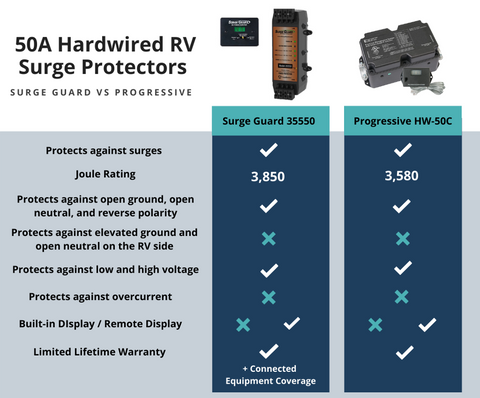
Which RV Surge Protector is Best?
We have offered a lot of information in this article and for me as a full time RVer, I choose the portable Surge Guard models as the best RV Surge Protector you can get in 2020. Some people say I am biased because this is the brand that I also sell at TechnoRV, but the truth is that I am biased as an RVer, not as a business owner. I could sell any brand on the market, and over the years have been approached by all of them.
As most RVers do before purchasing a new product, I researched all of the brands on the market, and then using the information I found, I chose what I most trusted to protect my personal RV. Now my process is usually more involved than most and can include visiting the company offices, talking to owners and manufacturers of these products, testing the units in all conditions, verifying customer service commitments, talking to company engineers, and more.
It is true, I am biased, and my bias is 100% based on my research and use of all of the products on the market. The Surge Guard 34931 and 34951 tops my list due to the quality of the build, the superior protection levels, Surge Guard’s commitment to customer service, and Surge Guard’s dedication to constant research and development..

Conclusion On Electrical Protection
As a full time RVer since 2014, I’ve had my RV in 49 states and connected to hundreds of different power pedestals, and my purpose for sharing this information is to be sure all RVers know and understand what an RV Surge Protector is and why they need to protect their RV using one. No matter what size RV you have, the results of bad power can be costly!
I want to give a big thank you to the electrical professionals that proofread this article for accuracy, including Mike Sokol from RV Electricity and the professionals and engineers from Southwire. I also want to thank the RVers that contributed to the survey results on RV Surge Protection.
Want to read this article offline? Download the PDF: RV Electrical Surge Protection

Eric Johnson and his wife Tami have been full-time RVers since 2014. Since that time, they have traveled over 60,000 miles and have visited 49 states. They currently travel in their Tiffin Phaeton 40AH while towing a Jeep Wrangler. Eric and Tami are Escapees Boot Camp instructors and present at RV shows and rallies across the country on topics related to RV technology and running a business from the road.
Eric and Tami have been the owners of TechnoRV since 2015 and have developed countless information guides, learning videos, and more in order to educate consumers about the RV technology products available.

1 comment
Surge Guard
View allThank you for this great article on RV surge protection. We are new to rving and look forward to reading your other articles.



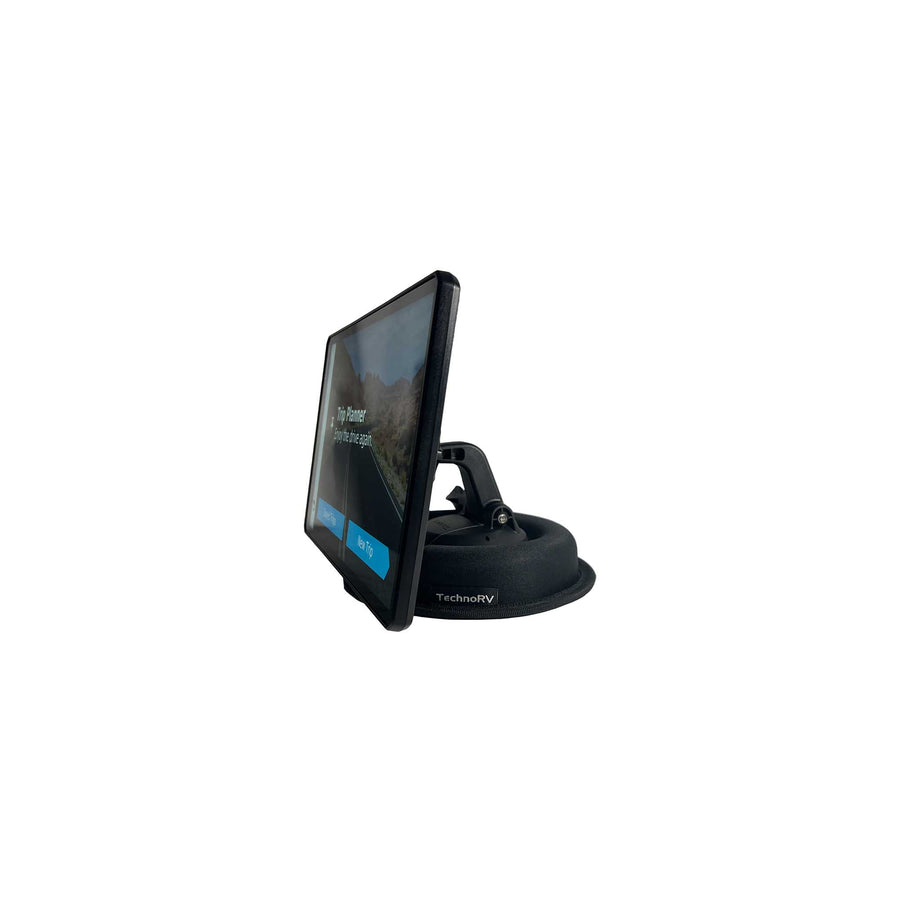
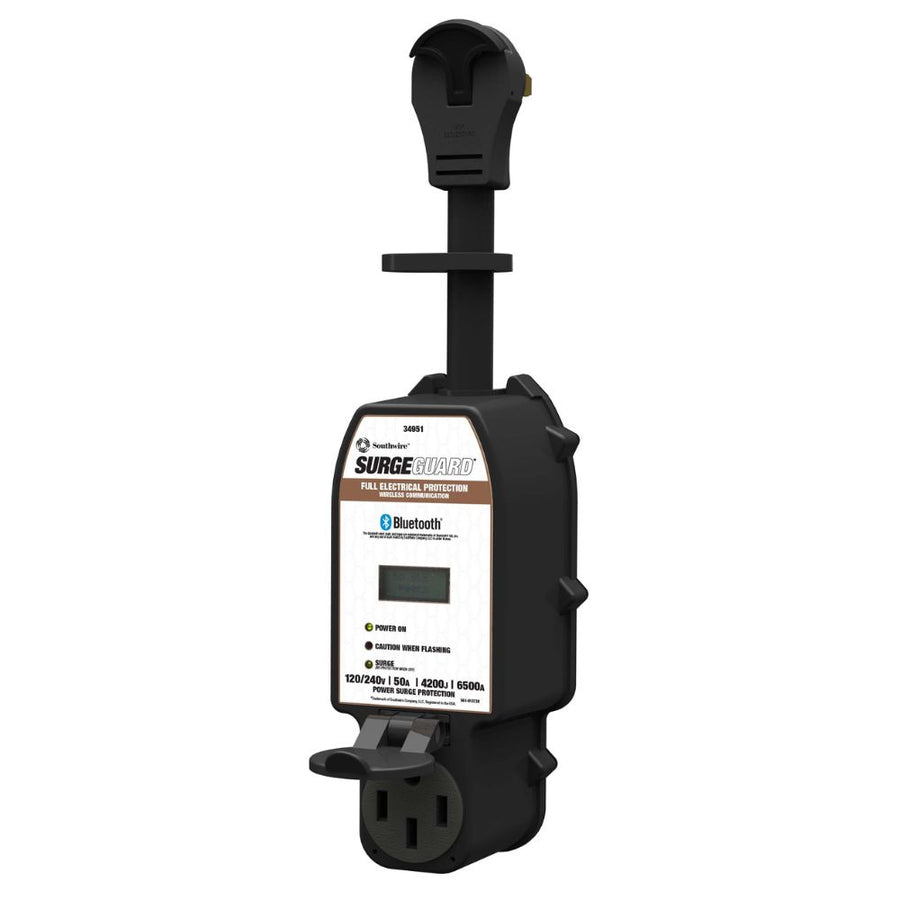

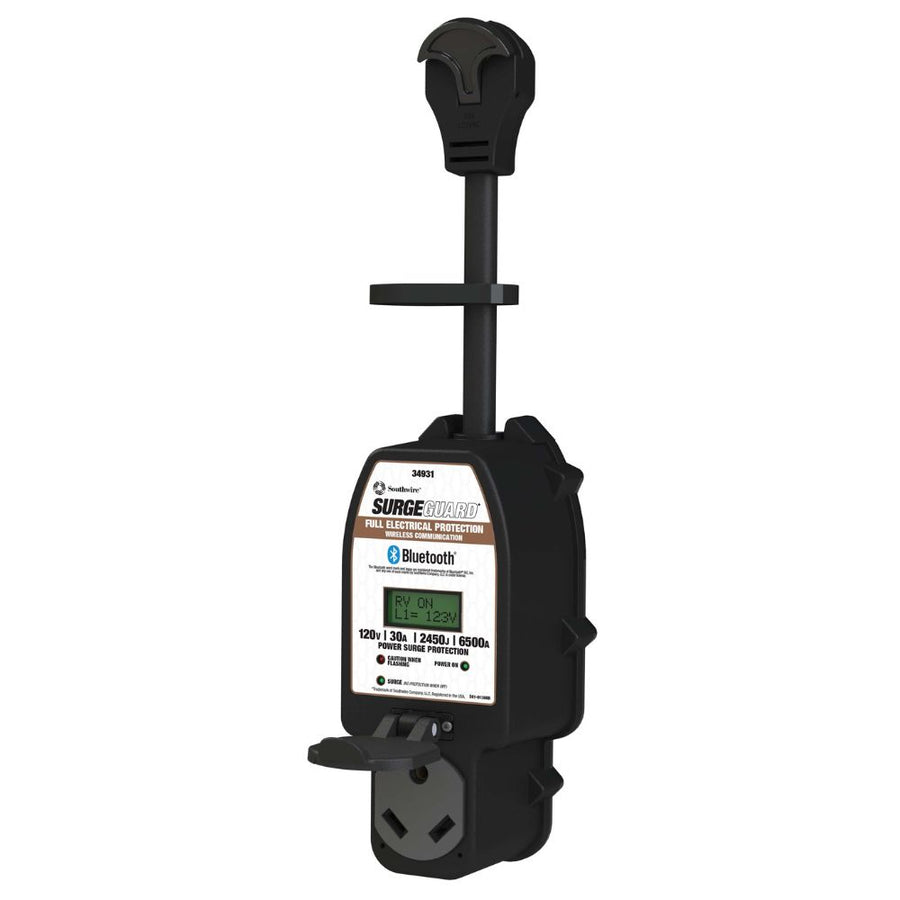

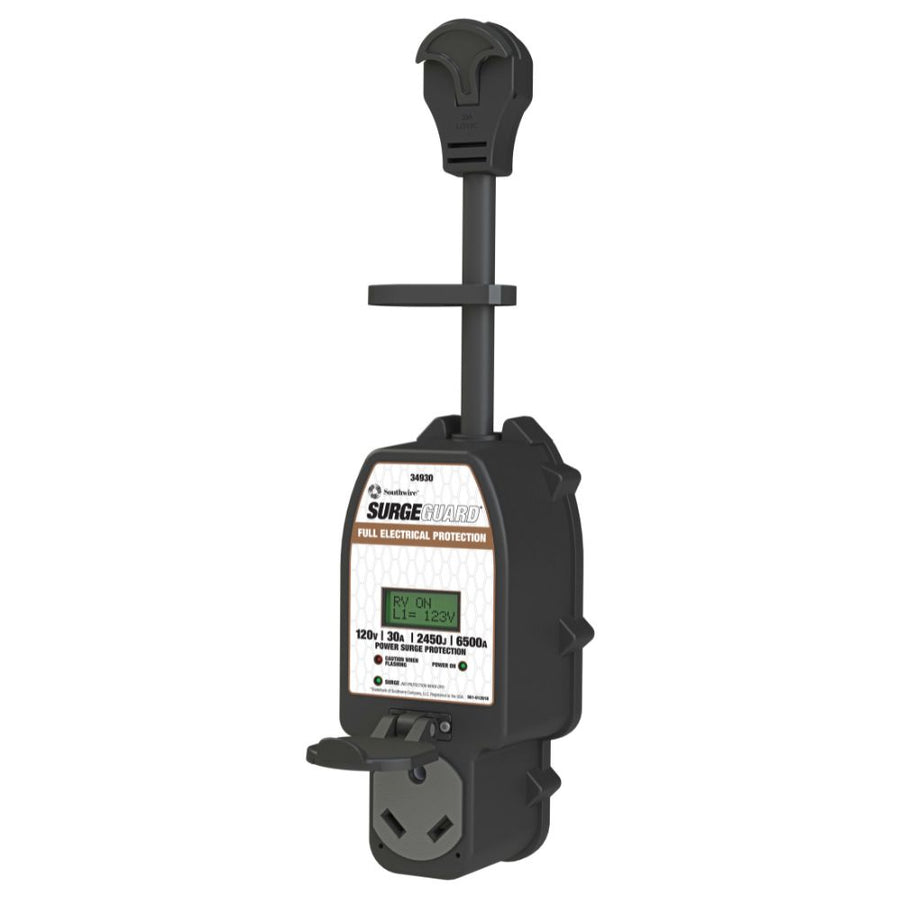

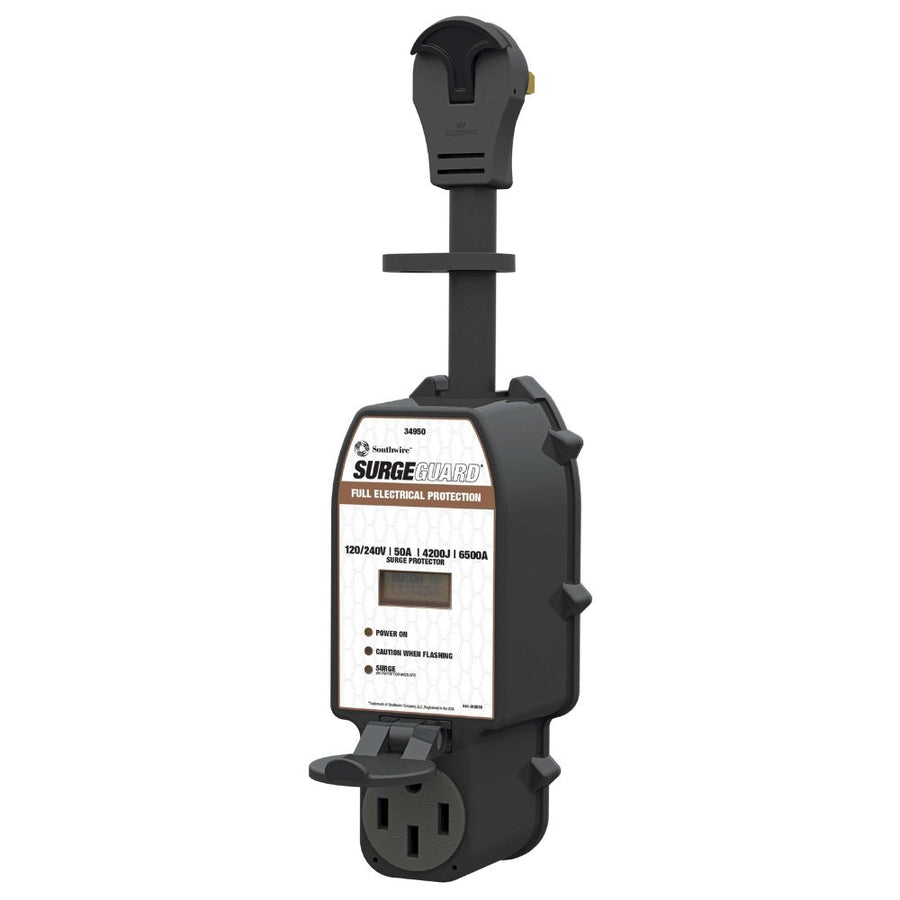


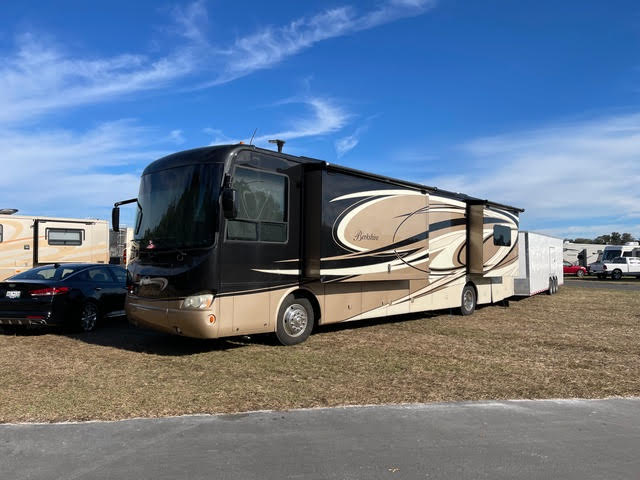

Thank you for this great article on RV surge protection. We are new to rving and look forward to reading your other articles.
Leave a comment